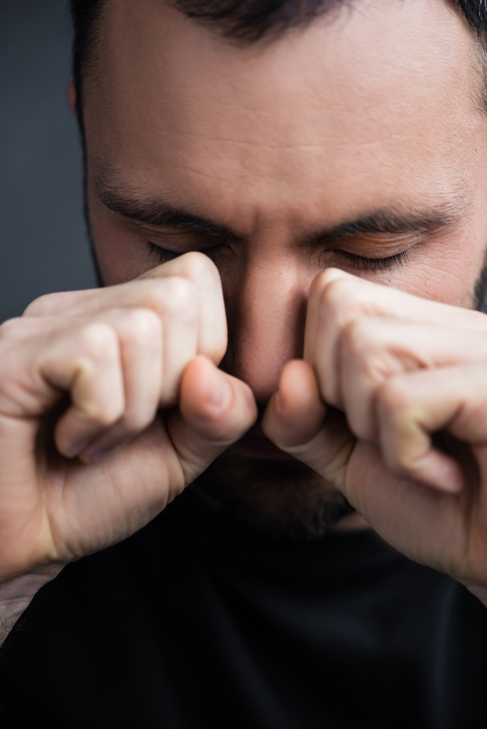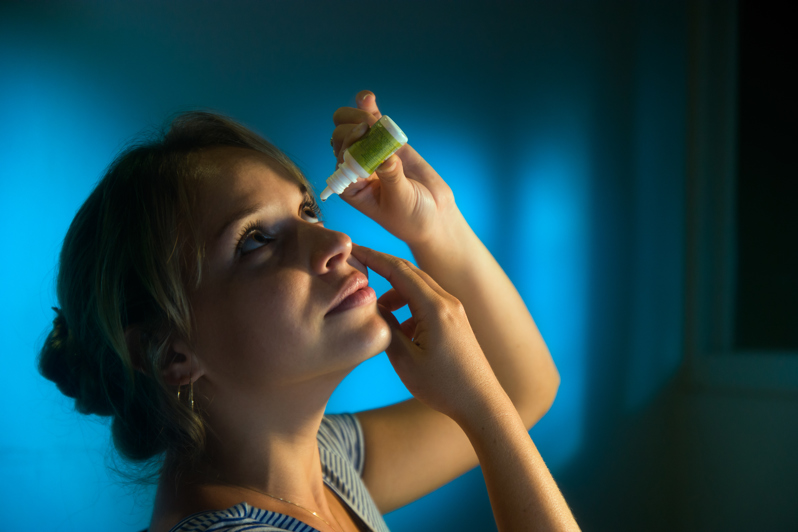Watery or tearing eyes happen to everyone at some point, but when it occurs excessively it is called epiphora. Epiphora could be a sign of an eye condition, allergic reactions or a blocked tear duct. In many cases, it will go away on its own but if it occurs persistently it may need to be treated and it is a good idea to have your eyes examined by an optometrist to determine its cause.
Epiphora has many different causes, some of which are more serious than others. In any case, it can be a frustrating condition that can impact your vision and cause problems in your daily life. Looking after your eye health and having regular eye exams, especially as you get older, can help minimise your risk of developing this symptom.
In this article, we’ll explain the symptoms of epiphora, some of its most common causes and the best ways to prevent and treat it.
What causes Epiphora?
Epiphora is a symptom or presentation of an eye problem rather than being a condition itself. As with many eye symptoms, it can be caused by different things and finding the root cause will allow you and your optometrist to find the best way to treat it.
Here are some of the most common causes of epiphora
- Allergic reactions. If you have an allergy, you are probably well aware that it can make your eyes water. Common allergies to dust, pollen and certain chemical can all lead to allergic conjunctivitis, which as well as making your eyes water, can cause itchiness, burning, puffy eyes and discharge.
- Eye infections. Allergic conjunctivitis is one example of an eye infection, but there are many others that can be caused by bacteria and viruses as well as complications from surgery and diseases or conditions affecting the eye.
- Blocked tear ducts. Tear ducts allow the eyes to get rid of excess tears, but they can become blocked and this can lead to epiphora. This can have a wide variety of causes including infections, nasal congestion, injury and ageing.
- Epiphora can happen at any age, but it is most common in babies aged under 12 months and people over 60 (McIntosh, 2023). As we get older, our eyes may become less effective at draining tears and we become more susceptible to other eye conditions which may cause epiphora (Meyer-Rüsenberg & Schaudig, 2009).
- Dry eye. When eyes become dry and inflamed, a reflex sometimes causes them to overproduce tears. This is why epiphora is a common symptom of dry eye.

Epiphora may also be caused by eye irritation, injury, and abnormalities of the eyelids. If you experience persistent epiphora, an optometrist can help you find the cause of the condition, which will help them recommend the best way to treat it.
Epiphora Symptoms
Epiphora mainly refers to excessive tearing of the eyes, but it often occurs with other symptoms like eye discharge, irritation, redness and swelling.
Excessive tearing of the eyes. Epiphora will cause your eyes to be wet, watery and teary. This is in the absence of usual causes for teary eyes like laughing or crying.

Eye discharge. In some cases of epiphora, especially those caused by viral, bacterial or allergic conjunctivitis, you may experience eye discharge.
Eye irritation, redness and swelling. Many causes of epiphora, like allergies, also cause these symptoms.
Epiphora usually occurs alongside other symptoms and there are many that you may experience. On its own epiphora is not usually a cause of concern, but when it occurs persistently seeing an optometrist is the best way to find a solution for it.
Diagnosis of Epiphora
Epiphora is diagnosed during a comprehensive eye examination. Optometrists use patient history and a close examination of the eye focusing on the tear ducts and any signs of inflammation or infection to make a diagnosis.
Watering eyes could have many causes, but your optometrist will use your symptoms and patient history to narrow it down. For example, patients with sinus problems or who have experienced an eye injury will be more likely to have an obstructive problem (Prince & Richard, 2009).
Inspecting the eye directly, your optometrist will examine your eyelids, look for any signs of infection like swelling or discharge and may also use eye drops to test how well your eyes are draining fluid.
If your optometrist suspects you may have a blocked tear duct they may recommend an X-Ray, CT or MRI scan. Using the images these scans create, it is possible to locate the cause of the blockage and find a solution.
Treatment
Because epiphora can be caused by a wide variety of issues, there are many different treatment options and the right one will depend on the specifics of each case. Treatment may be available in the form of medication or surgery, or your optometrist may recommend a lifestyle change or home remedy.
When the root cause of epiphora is allergies or an eye infection, it can usually be treated using medication. Allergies are commonly treated with antihistamines, but there are other options available and your optometrist may recommend a different medication based on your specific case. With viral and bacterial conjunctivitis, medication is often not necessary and treatment will focus on keeping your eyes clean and relieving symptoms — however, some cases require antibiotic eye drops (for bacterial conjunctivitis) or antiviral medication (for viral conjunctivitis). Other medicated eye drops may also be prescribed if epiphora is caused by dry eye or a similar condition.

Surgery for epiphora is quite rare and is only recommended when the cause is a blocked tear duct. In some cases, blocked tear ducts may also improve with time, while in others your optometrist may use a special solution to clear the blockage. However, if other methods don’t work they may recommend a dacryocystorhinostomy (DRC). This surgical option creates a new channel for tears to drain from your eyes. DRC carries more risks than other treatments and may not be effective in every case, though most surgeries are successful.
In some cases, epiphora is caused by something in your environment. This could be anything from an allergen like dust to exposure to certain chemicals. In these instances, changing your lifestyle or environment may be the best way to treat epiphora. This may mean avoiding environments where allergens are present or wearing protective eyewear.
There are some home remedies that can provide relief from epiphora, but you should always consult your optometrist first to ensure you receive any additional treatment you need. Keeping your eyes clean and gently washing them can often provide relief from epiphora especially when it is caused by infection or a blocked tear duct. Using a warm compress or gently massaging the eyelids may also relieve your symptoms and help to release blockages.
Prevention
Some causes of epiphora will be difficult or impossible to prevent and the best thing you can do is to treat or manage it. There are some types of epiphora, however, that you can manage to avoid by making some changes to your environment.
Staying up to date with your allergy medication and avoiding environments with a lot of allergens can help to minimise your epiphora. Depending on what causes your allergies this may mean trying to keep your house as free of dust as possible, avoiding being outside on dry and windy days or staying up-to-date on your medication. As everyone with allergies knows, it can be difficult to avoid your triggers but knowing what they are and doing your best to avoid them can help minimise those irritating symptoms.
Minimising your risk of infections can also help you to avoid epiphora. You can do this by practising good hygiene: washing your hands, especially before touching your eyes, applying eye drops or using contact lenses. This helps to minimise the risk of exposing your eyes to bacteria and viruses.




